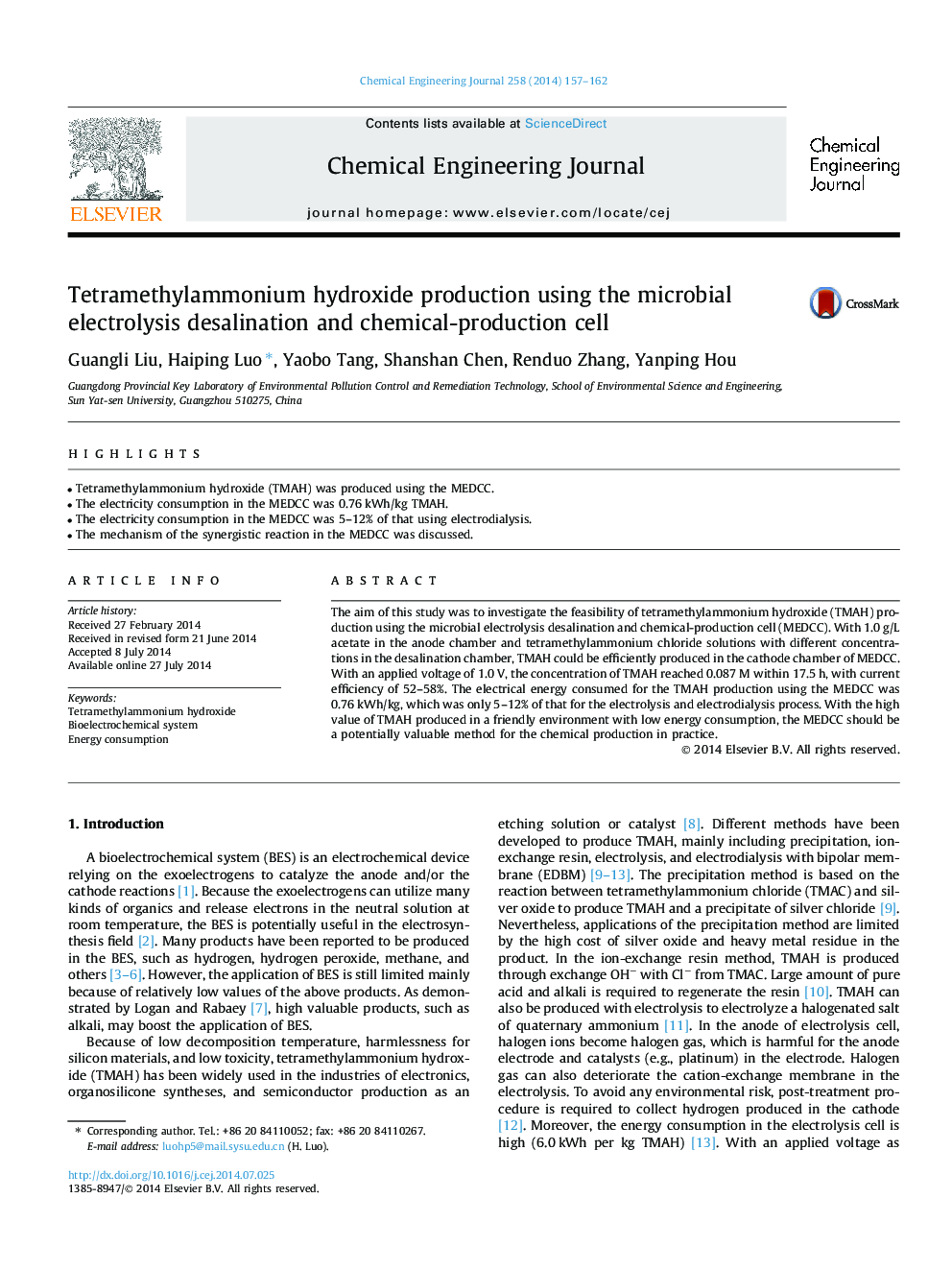| Article ID | Journal | Published Year | Pages | File Type |
|---|---|---|---|---|
| 146944 | Chemical Engineering Journal | 2014 | 6 Pages |
•Tetramethylammonium hydroxide (TMAH) was produced using the MEDCC.•The electricity consumption in the MEDCC was 0.76 kWh/kg TMAH.•The electricity consumption in the MEDCC was 5–12% of that using electrodialysis.•The mechanism of the synergistic reaction in the MEDCC was discussed.
The aim of this study was to investigate the feasibility of tetramethylammonium hydroxide (TMAH) production using the microbial electrolysis desalination and chemical-production cell (MEDCC). With 1.0 g/L acetate in the anode chamber and tetramethylammonium chloride solutions with different concentrations in the desalination chamber, TMAH could be efficiently produced in the cathode chamber of MEDCC. With an applied voltage of 1.0 V, the concentration of TMAH reached 0.087 M within 17.5 h, with current efficiency of 52–58%. The electrical energy consumed for the TMAH production using the MEDCC was 0.76 kWh/kg, which was only 5–12% of that for the electrolysis and electrodialysis process. With the high value of TMAH produced in a friendly environment with low energy consumption, the MEDCC should be a potentially valuable method for the chemical production in practice.
